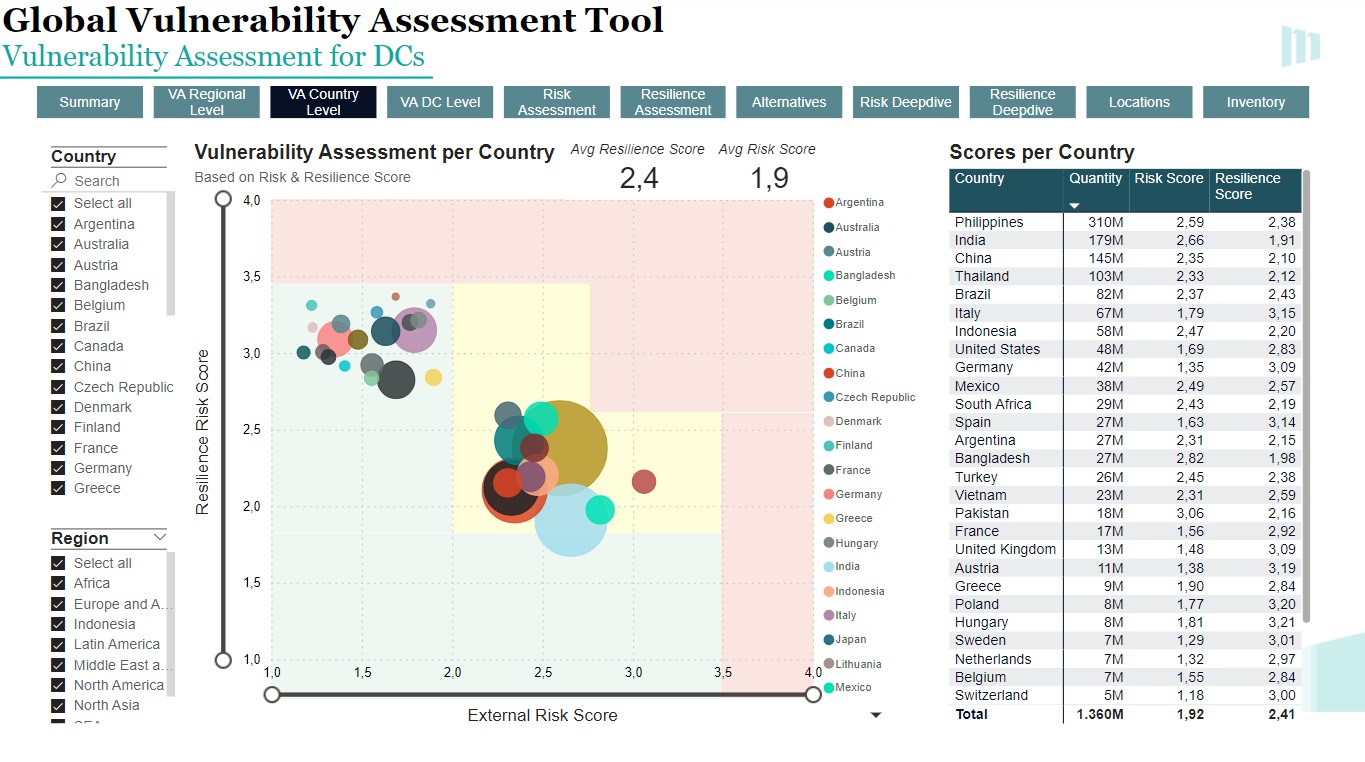

19.08.2024 | Written by Daniel Simon and Tim Wagner, Miebach
Business Challenge
A global FMCG giant faced significant challenges in managing the resilience of its extensive network. The primary issues included a lack of transparency in global resilience strategies, missing or undocumented resilience plans, and the absence of standardized global processes and communication channels for risk and resilience management.
Implemented Solutions
Objectives
To address these challenges, the project set out with several key objectives. The primary goal was to comply with audit results and address the identified resilience gaps. Other key objectives included providing transparency about potential risks across the network and the current resilience status of each region, country, and site. Additionally, a global governance blueprint, adaptable for regional implementation, needed to be established. Formulating future resilience strategies to enhance overall network resilience was the final piece.
Tool development and Implementation Process
To efficiently and effectively achieve the objectives, Miebach chose to build a fully customized resilience tool in PowerBI. The tool assesses and visualizes the state of risk and resilience across the 20 best-selling countries and 185 warehouses and will be extended to the full network in the future. It provides the client with a standardized methodology for evaluating risk and resilience within the global network. To ensure sustained use, Miebach created a template for regular data refreshes and tool updates – connection to live-system is planned. Additionally, our team established a comprehensive governance structure, including documentation of the resilience strategies for navigating and mitigating risks in the distribution network.

The implementation process involved several critical steps. After the initial data collection, the data underwent cleansing, preparation, and consolidation before being incorporated into the PowerBI tool for visualization. To properly evaluate external risks and internal resilience for each warehouse, a scoring model was developed. The external risk score was based on 17 open-source indices, while the internal resilience score was derived from the PowerBI database assessing alternatives, complexity, and preparation.
Simultaneously, the global governance model was constructed. This included a resilience strategy document with roles & responsibilities (combining a robust RACI - Responsible, Accountable, Consulted, Informed - matrix aligned with the three-lines of defense), clear communication lines, risk management processes, and a standardized incident-driven decision tree to guide responses in case of disruptions. Measures were prepared to improve resilience in local networks, and a list of resilience measures was developed, differentiated by implementation time and investment based on assessment outcomes.
Collaboration with the client was integral throughout the project to ensure long-lasting benefit. There was close cooperation in data collection and validation, as well as in the design of the assessment tool and the detailing of the scoring model factors. Ultimately, the tool was formally handed over to the client for implementation and ongoing use.
Benefits
The implemented strategy led to several key outcomes:
A transparent, documented, and digital database was established to provide a comprehensive overview of the global resilience situation across different warehouses.
A governance blueprint was created, offering a documented approach to incorporate and streamline resilience efforts throughout the whole organization, including structures and processes.
Recommendations
For future implementations, it is recommended to adopt a digital and tool-based approach to enhance transparency and manage resilience efforts. Connecting tools to live systems or establishing standardized processes for regular updates is critical. While standardization at the global level is beneficial, resilience strategies must be tailored to specific regions and geographies. Finally, actively involving management to lead resilience initiatives and integrate them into organizational structures is essential for success.
Miebach Insights
Generating tool-based transparency on a global level is an important step in the optimization process. It can be the starting point for an effective network resilience framework which, combined with an efficient governance model and a program, helps reduce the impact of disruptions in the future" – Daniel Simon, Senior Consultant, Miebach Consulting GmbH
Are you about to launch a network resilience project or do you have any questions or comments on this subject? Do not hesitate and feel free to contact us!
Authors

